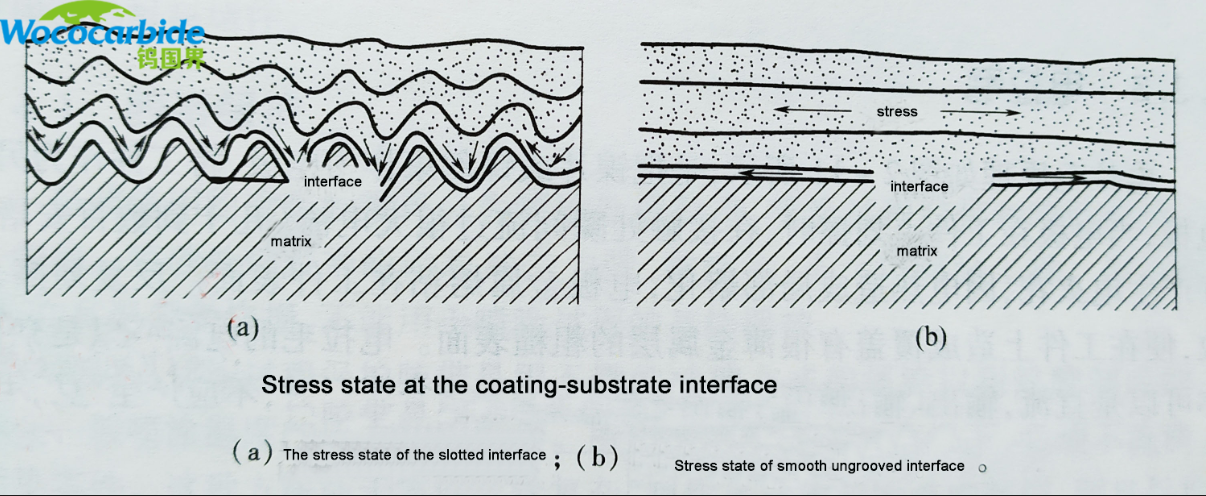

Grooving is a surface machining roughening method in which grooves with a certain spacing are cut out on the substrate. Grooving (or threading) is mainly for the following purposes.
1) Reduce shrinkage stress
2) Increase the contact area between the coating and the substrate.
3) Create an undulating stack of coatings to limit internal stress.
When the coating is subjected to cooling and heating cycles, stress will be generated on the interface and inside the coating due to the difference in thermal properties between the coating and the substrate during the cooling process. This stress builds up within the coating and can cause the coating to debond from the substrate. This stress increases with coating thickness and is more severe for hard metal or ceramic coatings. Since the grooving can disperse the stress into many small components, thereby effectively reducing the internal stress, it is beneficial to improve the bonding strength. The schematic diagram is shown in the figure.
The interfacial stress states of the two axes can be seen from the figure. Figure (a) shows a threaded shaft. This method can increase the bonding area between the coating and the substrate by about 30%, and due to the formation of a wavy coating, the shrinkage stress is limited and dispersed into many smaller components , and distributed at both ends of each thread, which can offset each other, thereby reducing the stress accumulation of the coating, which is of great significance for thicker coatings, high shrinkage coatings and sprayed large-area parts; The root of a thread should be rounded to reduce the groove effect. Another method is to replace the traditional V-shaped thread with a U-shaped groove. For heavy-duty mechanical parts, the V-shaped thread will produce a stress concentration effect. Although thread turning on the surface can improve the shear resistance of the coating, it weakens the fatigue resistance of the workpiece, so the surface of important shaft parts that are subject to cyclic stress should not be roughened by threading.

Since the thermal spray coating is composed of many deformed particles after collision, much like a layer of wood with a straight grain, the strength in the direction perpendicular to the coating is lower than that in the direction parallel to it. Since the deformed particles fluctuate up and down with the large grooves, the bonding strength of the coating is improved and the tendency of the coating to split is reduced.
Surface grooving should be considered when one of the following conditions exists.
1) For all coatings with a thickness of more than 1.20mm, any part has an edge.
2) The shrinkage of the coating is very high, and its thickness exceeds 0.75mm, and there is an edge in any part.
3) Coatings without edges, e.g. coatings with severe working conditions or where there is a risk of cracking when continuously sprayed on cylindrical surfaces due to thick coatings and shrinkage of the material.
Hot information

